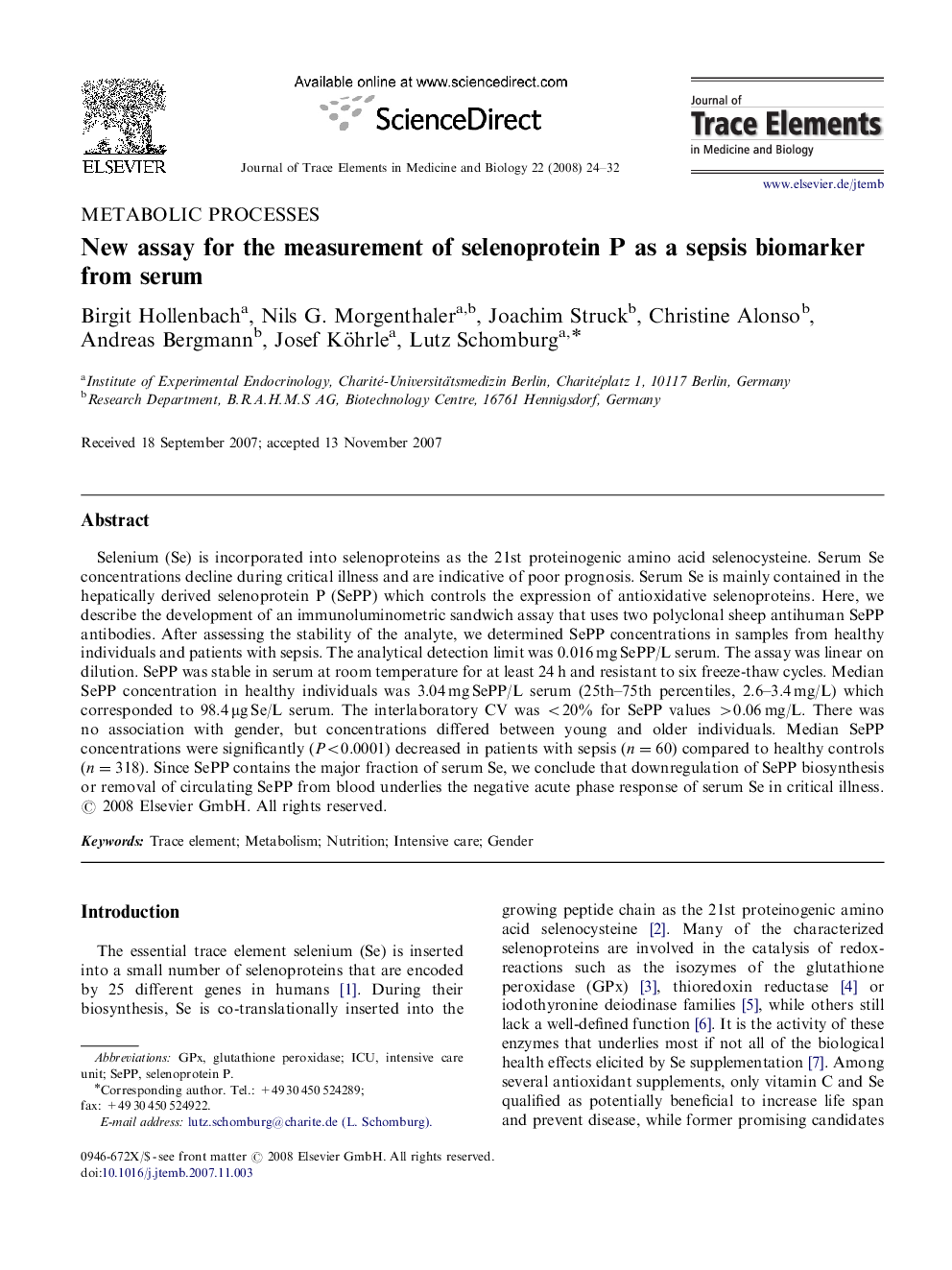| Article ID | Journal | Published Year | Pages | File Type |
|---|---|---|---|---|
| 1227435 | Journal of Trace Elements in Medicine and Biology | 2008 | 9 Pages |
Selenium (Se) is incorporated into selenoproteins as the 21st proteinogenic amino acid selenocysteine. Serum Se concentrations decline during critical illness and are indicative of poor prognosis. Serum Se is mainly contained in the hepatically derived selenoprotein P (SePP) which controls the expression of antioxidative selenoproteins. Here, we describe the development of an immunoluminometric sandwich assay that uses two polyclonal sheep antihuman SePP antibodies. After assessing the stability of the analyte, we determined SePP concentrations in samples from healthy individuals and patients with sepsis. The analytical detection limit was 0.016 mg SePP/L serum. The assay was linear on dilution. SePP was stable in serum at room temperature for at least 24 h and resistant to six freeze-thaw cycles. Median SePP concentration in healthy individuals was 3.04 mg SePP/L serum (25th–75th percentiles, 2.6–3.4 mg/L) which corresponded to 98.4 μg Se/L serum. The interlaboratory CV was <20% for SePP values >0.06 mg/L. There was no association with gender, but concentrations differed between young and older individuals. Median SePP concentrations were significantly (P<0.0001) decreased in patients with sepsis (n=60) compared to healthy controls (n=318). Since SePP contains the major fraction of serum Se, we conclude that downregulation of SePP biosynthesis or removal of circulating SePP from blood underlies the negative acute phase response of serum Se in critical illness.
